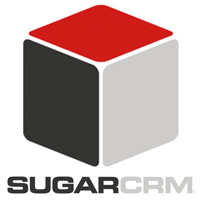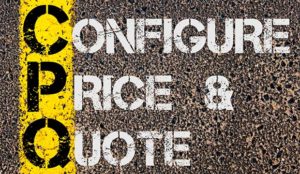CPQ — that is, configure, price, quote — is one of the most transitional apps, because it spans front and back offices, and because its very existence has changed these functions. Another app in this category is sales compensation management. Both of their stories are about front-office processes needing back-office data. Once the data is made available, the process evolves to be far more useful to the business.
In each case, the original, fundamental application need was record keeping in the back office. Sales compensation was a back-office problem that typically surfaced at the end of a quarter when companies needed to pay sales reps.
A typical accounting department had to go through business won, products, discounts, various commission rates, splits and more. Getting it all right was a challenge, and there were various channels for appeals that could draw out the process for weeks.
Compensation largely operated with one spreadsheet for record keeping and another for calculations. The business had an official spreadsheet, the sales manager had one, and every rep had one too. They often coincided but rarely agreed.
When bespoke applications became available for compensation, in addition to all of the benefits of quick and accurate calculation, the compensation system also became a de facto planning tool. Now, reps and their managers could play out what-if scenarios to determine which effort would bring in the greatest rewards — very important at the end of a quarter.
CPQ’s Shift
CPQ went through a similar metamorphosis. When CPQ was nothing but a bunch of spreadsheets for catalog, price lists and quotations, reps had to do a lot of manual lookups to formulate quotes. It wasn’t just a question of how many items to include — special conditions had to be met, like including training or accessories and acceptable discounts for different items. All this had to be done by hand and checked by a manager.
When CPQ became a system supported by a database — and ideally a platform — it could draw on the customer master file to access past history and the customer profile, as well as draw on other platform services from collaboration to analytics.
That opened up new avenues in the front office, while keeping the back office better informed about revenue and deal flows. Add the ability to store common business rules with the product and customer data, and suddenly CPQ had a new job to do.
At once, CPQ could help to prevent errors of omission that produced misquotes that businesses often had to eat. CPQ also could help to prevent errors of commission, such as using the wrong pricing from an old price list or out-ofdate discounts.
Several things quickly became possible that changed the nature of the sales process for the better. It became possible to apply analytics to the deal database to quickly ascertain which deals might be outliers in configuration or pricing without having to examine each deal.
Also, just as with compensation, managers and reps could examine what-if scenarios more easily and better know if and where there was wiggle room for negotiation purposes. Having access to prior deal information also was invaluable.
Finally, when combined with basic analytics of the sales process, CPQ could provide a more accurate understanding of the dynamic pipeline close to quarter’s end.
Virtues of Rules
Making all this happen meant making back-office data available to front-office processes. In many businesses for instance, it’s not unusual for the back office to maintain the product catalog, pricing, and discounting structures within the enterprise resource planning system. Getting information from ERP to the front office has not always been easy — but with ERP and CPQ apps conforming to the standards of a cloud platform, it becomes easy.
Having the correct and up-to-date product and pricing data is especially important for any business working with the federal government under rules for General Services Administration pricing. Pledging to the GSA that your business gives no better pricing to any other customer requires the diligence to enforce that statement, which is made easy by a rules-based CPQ system.
Rules for the front office might be the most- and least-appreciated part of CPQ. It’s not likely that businesses running pricing from spreadsheets will be able to publish and enforce special pricing for select markets or products, since in the name of getting the business, reps often run rough-shod over pricing norms.
Reps are goaled on aggregate sales and not profitability, after all, so having a CPQ system to enforce basic profitability rules does good things for them and for the business. With CPQ and its rules in place and uniformly enforced, it’s much harder to game the system.
So, in the process of automating a part of sales, CPQ has been instrumental in helping to professionalize it. CPQ helps businesses, especially emerging ones in new categories, to create norms for pricing as well as the overall sales process, making negotiations more substantive and keeping the discussion focused on business need rather than simple pricing.
When pricing, rather than problem solving, becomes the central part of a sales discussion, commoditization is well under way, and that’s the last thing any business wants.



























































Social CRM
See all Social CRM